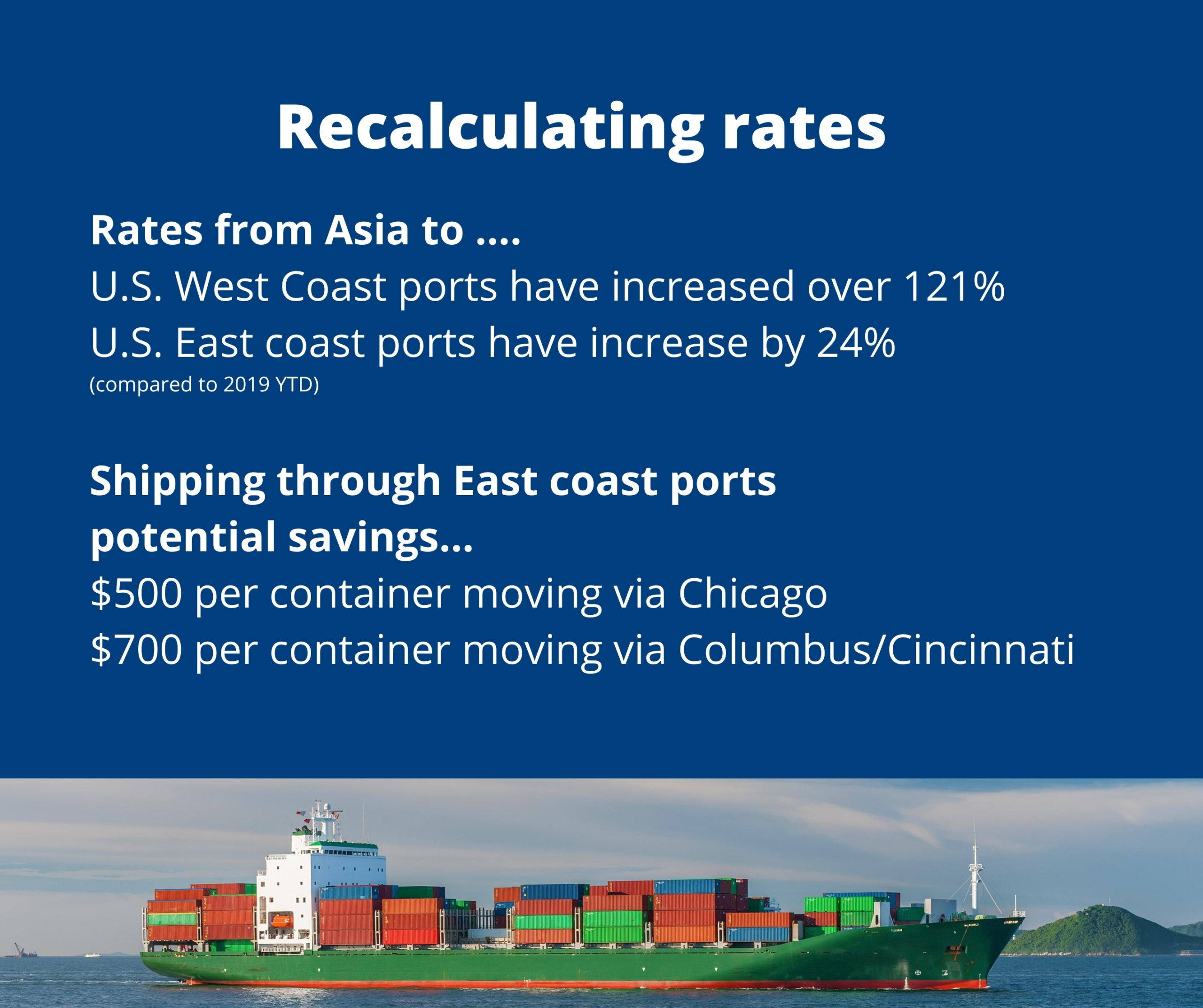Peak shipping season is coming, and Midwest manufacturers continue to work to recover the year. The Cargo Services team sees headwinds and strongly recommends now as the time to carefully review supply chains to determine if there are options to save cash by shipping goods from Asia via East coast ports. Container rates are sharply on the rise for cargo moving through the West coast. With careful planning, the cost savings to move shipments through east coast ports could add up fast.
Steamship lines are aggressively controlling vessel space by imposing a record number of blank (cancelled) sailings this year due to falling volumes caused by tariffs and COVID-19 economic disruptions early in the year. There are just ten global steamship lines left in the industry and they’ve formed three alliances. This gives them control of pricing because they can share the cost of pulling (blanking out) vessels to keep space tight and rates steady.
However, as volumes increase with the United States opening back up post COVID-19 quarantine coupled with the high demand of Personal Protective Equipment (PPE) and e-commerce shipments, rates are escalating especially for U.S. West coast and Canadian West coast ports. Why? Because carriers are slow to put space back into the system.

Container import rates increased by high triple digits with three general rate increases in June. More are expected in August. According to an article published in the Journal of Commerce on July 31, import rates to U.S. West coast ports from Asia have increased over 121% year to date compared to 2019. East coast port rates from Asia have increase as well by just 24% compared to 2019.
Look to see if Asian supply chain transit time expectations can adjust to an additional 7 to 10 days. The savings could reach $500 per container moving shipments via Chicago compared to moving containers in through Los Angeles/Long Beach. The same option goes for Columbus and Cincinnati Ohio rates, which offer even more savings reaching $700 per 40-foot containers. There may be saving on delivery if a company facility is closer to Columbus, Cincinnati or Louisville, Kentucky compared to Chicago area rail ramps.
This situation with carriers controlling space coupled with steady volumes of PPE and e-commerce cargo primarily moving through U.S. West coast ports and West coast Canadian ports could continue in 2021. Adjusting Asian container transit time expectations by adding more days and moving through East coast ports might be the way to offset some of the carrier rate increases that are probably here to stay and impact budgets.
If you would like to discuss options for your supply chain, contact us directly at 800-645-0386.
